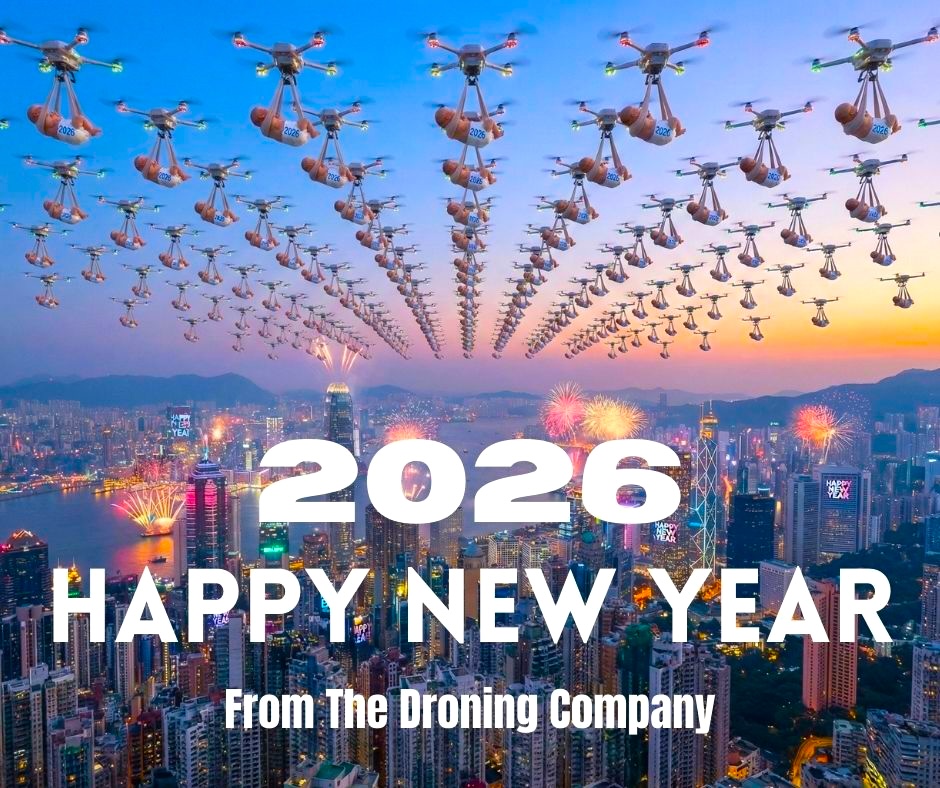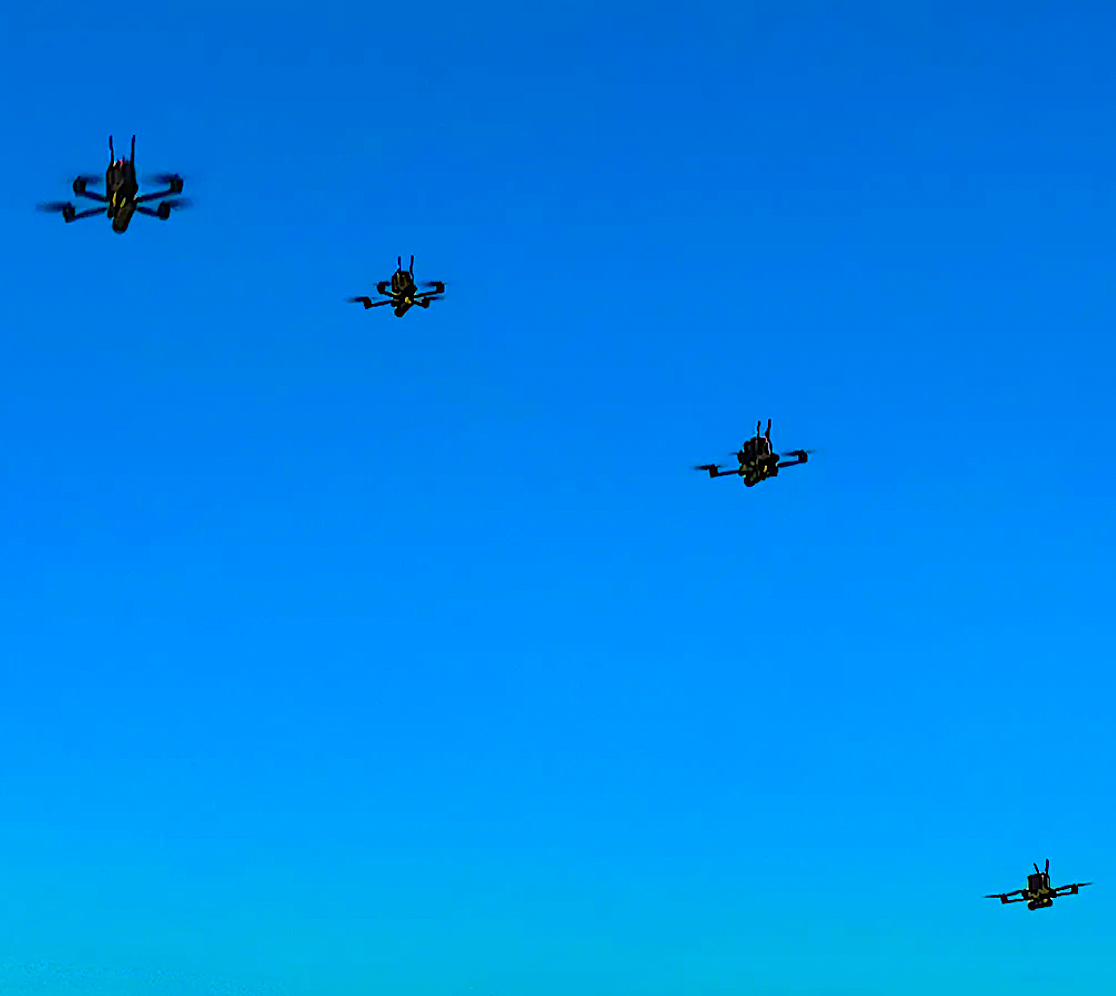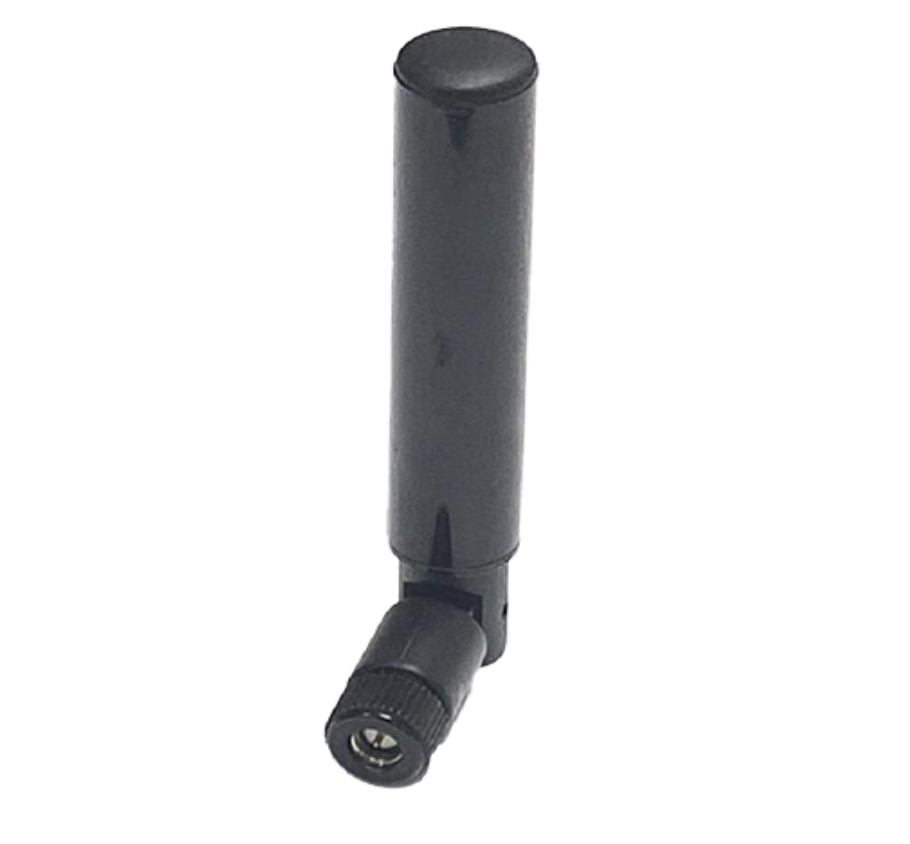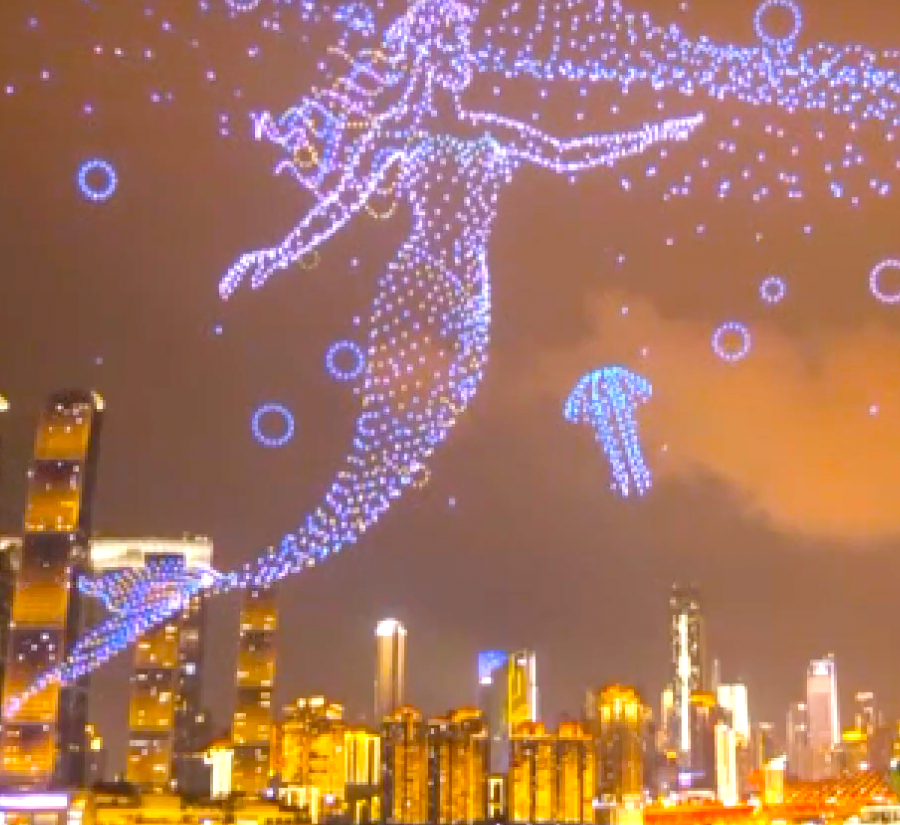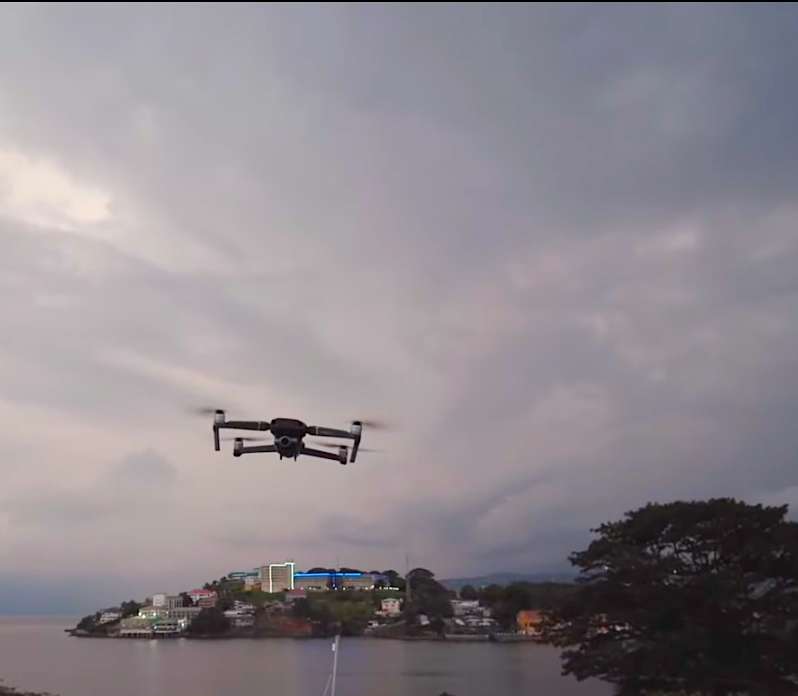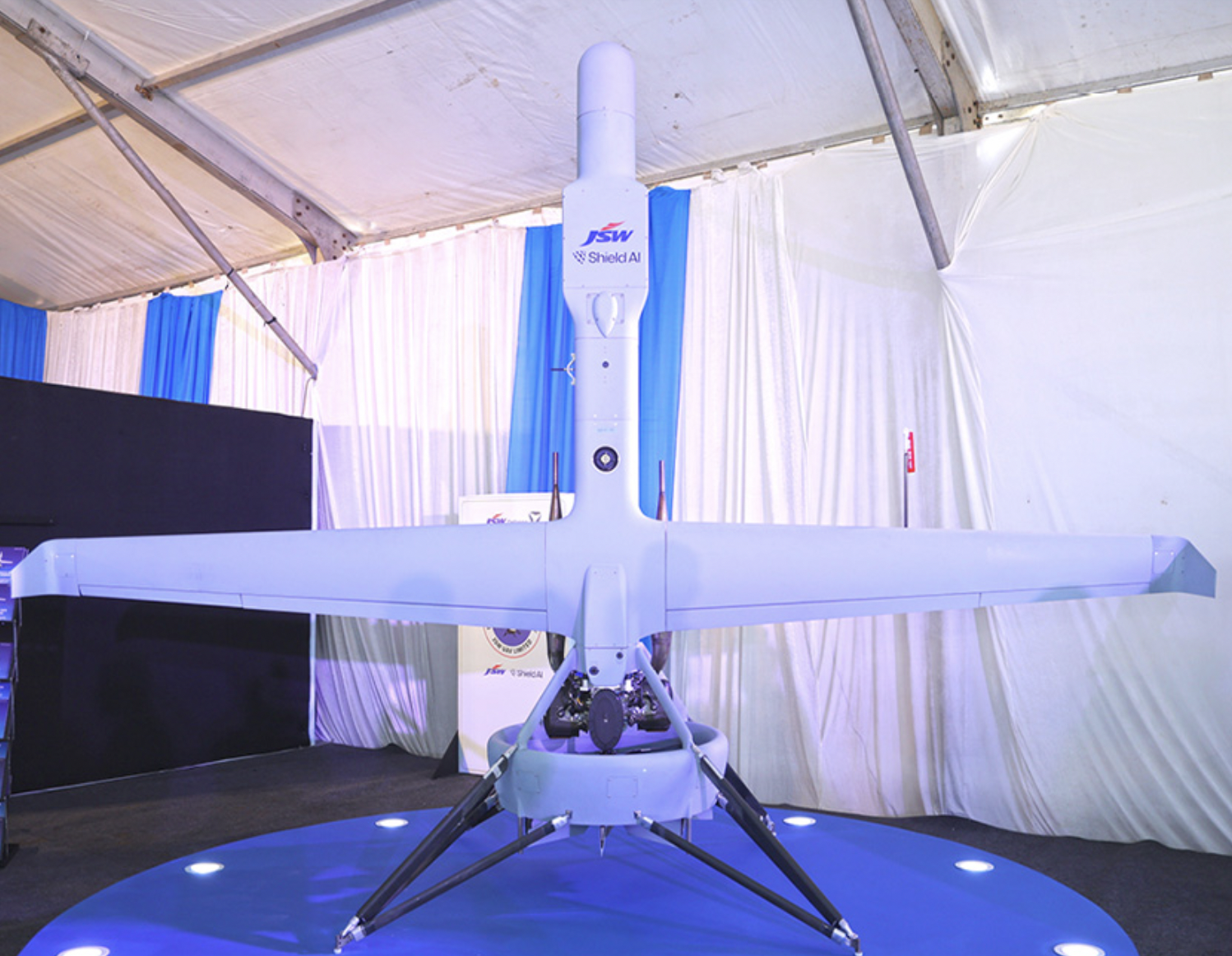Featured NewsProduct NewsAccessoriesFruity Chutes Ultimate Parachute for Drones Guide
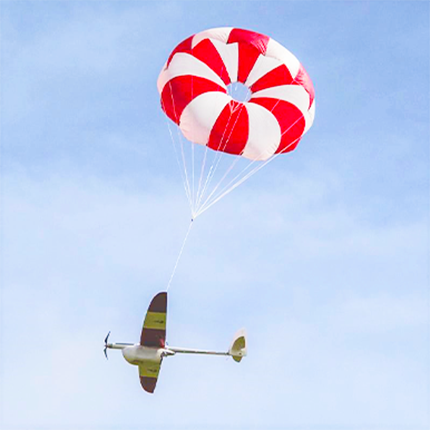
01 December 2023
By Janice Engelgau
The drone industry is not one for the faint of heart. The bar for success is high with ever changing factors like regulations, technical advancements, and new competitors. Integrating in a high quality and reliable drone parachute system can improve those odds. Having a solid parachute for your drone has the potential to boost your sales, improve your reputation, win the approval of the public, and if you achieve ASTM F3322 certification you will become an unbeatable stakeholder.
After 15+ years and 4000 drone parachute customers we at Fruity Chutes know how picking a successful parachute system for your drone takes many considerations including picking a good vendor, drone design readiness, choosing the right recovery gear, integration, and deciding on ASTM certification.
Choosing the Right Vendor: Domino Effect of a Prudent Decision
Like a row of dominoes falling into place after one right move, pick the right parachute vendor and everything will fall into place. Picking the right parachute manufacturer is critical to ensuring a reliable drone parachute system.
It is important to go with a vendor that has a long established history with a large and varied customer base. Vendors as such will have dealt with a big variety of use cases and requirements. It is likely that they will already have a good deal of understanding in how to go about things no matter how unique your requirements are. Their product line will also be mature and refined over lots of feedback and uses. You do not want to go with anything experimental or too new. The chances of these unproven products failing is high and risky.
Knowledge of regulations for drone parachutes is an important consideration. There are many places around the world where parachutes for drones are either required or highly favorable. A company who understands the regulations around this can help ensure your drone parachute efforts are not wasted.
Customer service should not be forgotten about too. Parachutes have many different components to them and with human cause being the biggest factor in error it is important to know that who you work with will be able to answer all your questions.
These are all factors that make Fruity Chutes an ideal choice when it comes to picking a parachute for drones or any other UAS. Since 2007 Fruity Chutes has worked with over 4000 customers who have come from many different industries like rocketry, aerospace, high altitude balloon research, and most of all drones. Over these 15+ years we have refined our product line based on 1000s of rounds of feedback and changing regulations. Our proven products and high level of customer service have helped us establish a large varied customer base with low turnover.
Drone Design Readiness: Proactive Integration for Success
Contrary to a common industry misconception, treating a parachute system as an afterthought and deferring considerations until the end of innovation can lead to failure. The optimal approach is to incorporate the parachute system into the initial design phase, ensuring the integration of necessary elements like electronics and volume. This proactive approach guarantees that your drone innovation aligns seamlessly with parachute requirements, preventing the realization of inadequate setups when it's too late.
The sooner you can begin talks with your chosen UAS parachute provider the better. They will be able to consult with you to ensure that the right components are in place for a seamless system.
Selecting the Perfect Parachute System: Tailoring to Drone Types
The first thing to consider when choosing a parachute system is what the launcher method will be. This is based on the drone type.
Parachutes for multicopters and other prop based drones. For an agile drone with props, like a quadcopter or VTOL, the best thing to do is go with a ballistic launched parachute system. At Fruity Chutes we recommend either our spring based Harrier (0.6kg to 12.4kg) (https://shop.fruitychutes.com/collections/harrier-launchers-1-27-kg-to-12-4-kg) or Skycat (1.25kg to 30kg) (https://shop.fruitychutes.com/collections/skycat-launchers-2-5-kg-to-20-kg) launchers, or our CO2 Peregrine launchers (12.7 kg to 200kg) (https://shop.fruitychutes.com/collections/peregrine-ballistic-parachute).
Parachutes for fixed wing. For drones with no props whatsoever a ballistic launcher can be used, but because of the ever forward motion of the drone a passive deployment method. This can include a main parachute which is extracted by a pilot chute. This is a much lighter alternative to the ballistic options. Fruity Chutes Fixed Wing Bundles (https://shop.fruitychutes.com/collections/fixed-wing-bundle) are a good example of this.
Picking the parachute size. The weight of your system will determine the parachute size. You want to size the parachute based on the weight so the vehicle descends at 15 feet per a second. This speed is a good balance of a reasonable impact on landing and the parachute not getting kitted and drug away. A descent rate calculator (https://fruitychutes.com/help_for_parachutes/parachute-descent-rate-calculator) can help aid in this decision.
Picking your trigger mechanism. There are a couple different trigger options. You can use an automatic trigger system that uses an IMU and accelerometer to detect anything out of normal to trigger the parachute. You can also use a manual option where the pilot decides to eject the parachute system. Either way it is wise to have a way that is external from the drone’s system so that if it fails you can still eject the parachute. The SATS-MINI automatic trigger system and The Skycat Manual Rescue Radio are two options that will still reliably work when the drone has lost communication.
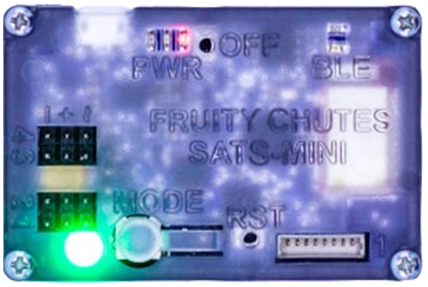
SATS-MINI automatic trigger system.
Pursuing ASTM F3322 Certification: Gateway to Industry Leadership
Having your drone and parachute certified to the ASTM F3322 standard can open doors. It can lead you to becoming the undeniable leader in your sector of the industry and being untouchable to your competition. Waivers and approvals become possible through the FAA, EASA, and other CAAs when you have ASTM certification.
This certification is ideal for drone OEMs, large drone service providers, and major value adders who are seeking approvals and waivers from their CAA. We recommend checking with your local CAA to see if ASTM F3322 is accepted to gain your desired approval and waivers
Navigating Common Pitfalls in ASTM F3322 Certification
It is a common misconception that one can save money by navigating the parachute recovery standard independently. This is flawed due to the intricate nature of both parachute systems and the standard itself. These systems are multifaceted, incorporating mechanical, manual, automatic, physical, electronic, and other elements. Attempting to comprehend and implement the standard independently can consume a significant amount of time and resources—approximately 300 hours and over $100k. Opting to collaborate with an expert on the standard provides invaluable guidance, streamlining the process and allowing one to focus on core proficiencies without the need to decipher complex formulas, jargon, and testing tables.
After assisting numerous customers through the ASTM process, we observed the considerable resources required for certification, often leading to compromises in innovation and workflow disruptions. Having been part of the F38 workgroup in crafting ASTM F3322, we established aConsultation Program to alleviate these challenges. Launched in 2023 as the ASTM Compliant Drone ParaPrep Program (https://fruitychutes.com/uav_rpv_drone_recovery_parachutes/astm-compliant-drone-parachute-program), it leverages our 16 years of expertise, extensive customer experience, and in-depth knowledge of the standard to guide companies through the process at a significantly reduced cost.
The Pitfall of Going with the Wrong Parachute Recovery System
Contrary to the notion that a well-engineered drone can compensate for a mediocre parachute system in ASTM testing is often believed. The TPTA's random initiation of failures during approximately 50 tests for standard compliance will reveal any faults and one failed test will lead to needing to retest from the start which is expensive. Opting for an unproven parachute system, lacking maturity, high quality, and lab-tested refinement, significantly raises the risk of test failures, necessitating a restart of the entire test suite with considerable associated costs. Investing in high-quality recovery gear from an experienced drone parachute manufacturer mitigates these risks, ensuring a faster and more successful ASTM certification process with reduced time and costs.
Meet Fruity Chutes: A Legacy of Excellance
Since 2007 and with more than 4000 customers Fruity Chutes has paved the way as the world leader in UAS recovery. We are a manufacturer of premium quality parachutes for aerospace, consumers, institutional, university and corporate customers who demand exceptional quality, have exacting requirements and expect exceptional service.
Our parachutes are used for all types of rocketry, unmanned air vehicles (UAV) parachutes, multirotor and multicopter parachutes, drone parachutes, RC aircraft parachutes, and balloon research. All our products are US made from US materials.
Elevate Your Drone Success with Fruity Chutes
There are many factors that go into deciding a successful parachute for drones. If you would like support in the process please reach out to us. It is our core value to make sure our customers have everything they need so they can be successful.
